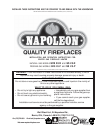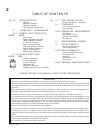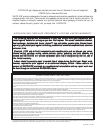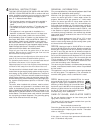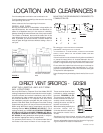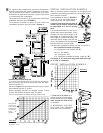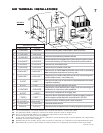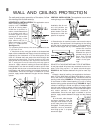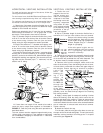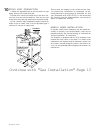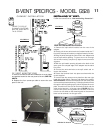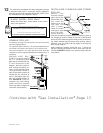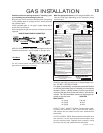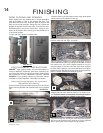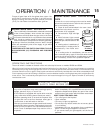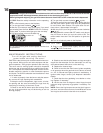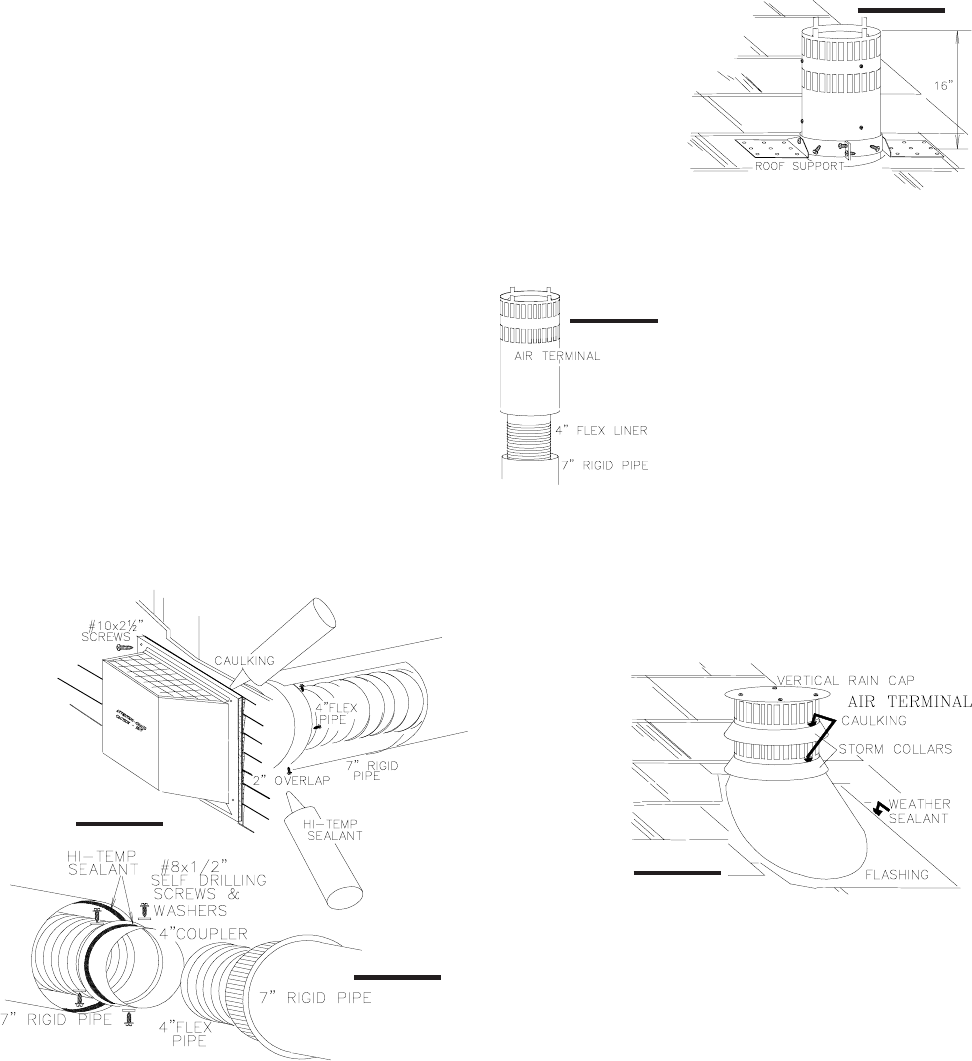
9
W415-0153 / A / 10.29.01
VERTICAL VENTING INSTALLATION
1. Fasten the roof
support to the roof us-
ing the screws pro-
vided. The roof support
is optional. In this case
the venting is to be ad-
equately supported
using either an alter-
nate method suitable
to the authority having
jurisdiction or the op-
tional roof support.
2. Slip a 4" diameter length of aluminium flexible liner a
minimum of 2" over the inner sleeve of the air terminal.
Secure to the sleeve using 3 screws
and flat washers. Seal the joint and
screw heads using high temperature
sealant. Repeat using a 7" diameter
length of rigid piping.
If the attic space is tight, we rec-
ommend adding sufficient lengths
of 7" rigid piping, secured and
sealed as necessary.
3. Thread the air terminal pipe assembly down through
the roof support and attach, ensuring that a minimum 16"
of air terminal will penetrate the roof when fastened. The
air terminal must be located vertically and plumb.
4. Remove nails from the shingles, above and to the
sides of the chimney. Place the flashing over the air termi-
nal and slide it underneath the sides and upper edge of
the shingles. Ensure that the air terminal is properly
centered
within the
flashing, giv-
ing a 3/4"
margin all
around. Fas-
ten to the roof.
Do NOT nail
through the
lower portion
of the flash-
ing. Make weather-tight by sealing with caulking. Where
possible, cover the sides and top edges of the flashing
with roofing material.
5. Apply a heavy bead of waterproof caulking 2 inches
above the flashing. Slide the storm collar around the air
terminal and down to the caulking. Tighten to ensure that a
weather-tight seal between the air terminal and the collar
is achieved. Attach the other storm collar centered between
the air intake and air exhaust slots onto the air terminal.
Tighten securely.
6. Attach the vertical rain cap.
7. In the attic, slide the vent pipe collar down to cover up
the open end of the shield and tighten. This will prevent any
materials, such as insulation, from filling up the 1" air space
around the pipe. Figure 15.
HORIZONTAL VENTING INSTALLATION
For safe and proper operation of the stove, follow the
venting instructions exactly.
For horizontal runs, both Wolf Steel and Simpson Dura-
vent venting components may have a 0" rise per foot.
For optimum performance it is recommended that all
horizontal runs have a minimum ¼ inch rise per foot.
1. Stretch the 4" diameter aluminium flexible liner to the
required length taking into account the additional length
needed for the finished wall surface.
Spacers are attached to the 4" inner flex liner at predeter-
mined intervals to maintain a 1-1/4" air gap to the 7" outer
stove pipe. These spacers must not be removed.
Slip a 4" diameter length of aluminium flexible liner a mini-
mum of 2" over the inner sleeve of the air terminal. Secure
to the sleeve using 3 screws. Seal the joint and screw
heads using the high temperature sealant provided.
2. Slip the first section of 7" diameter stove pipe a mini-
mum of 2" over the outer sleeve of the air terminal. Secure
to the sleeve using 3 screws. Seal the joint and screw
heads using high temperature sealant.
3. Insert the liners through the firestop / vent pipe shield.
Holding the air terminal (lettering in an upright, readable
position), secure to the exterior wall. Make weather tight by
sealing with caulking (not supplied). The air terminal mount-
ing plate may be recessed (up to
3
/
4
" maximum) into the
exterior wall or siding.
4. If more than one length of liner needs to be used to
reach the stove, couple them together as illustrated in
FIGURE 17. Seal the joints using the same procedure as
described above.
The vent system must be supported approximately every
10 feet along a horizontal run. Use supports or equivalent
non-combustible strapping to maintain the 1" clearance
from combustibles.
FIGURE 16
FIGURE 17
FIGURE 18
FIGURE 19
FIGURE 20



